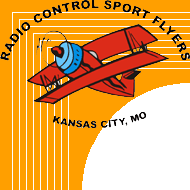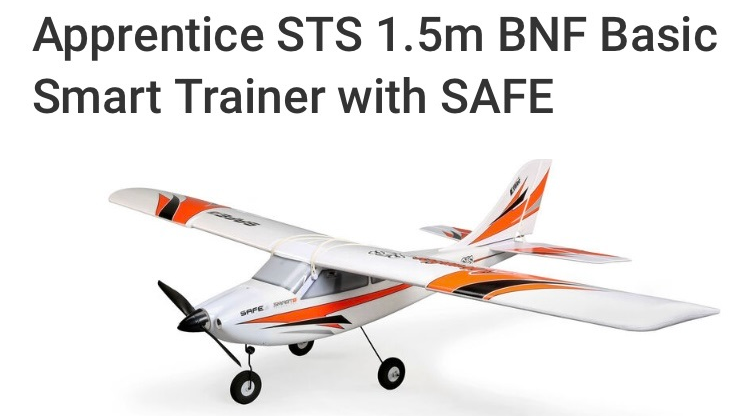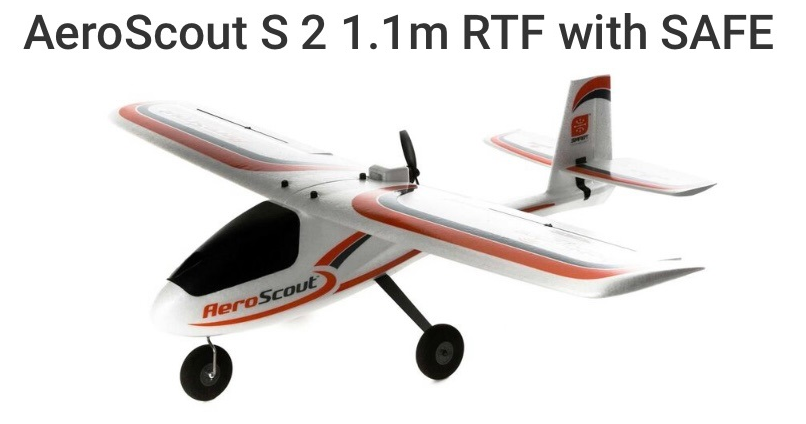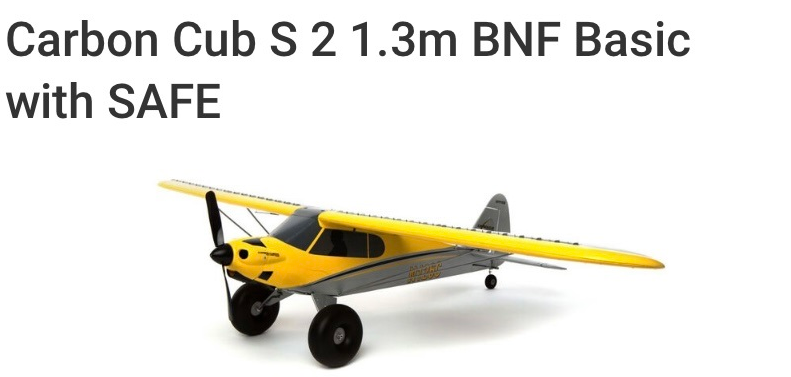


This page is under construction and is about 25% complete. Still, there is a significant amount of information and help for the newbie in selecting trainer planes.
Information for Newbies
This page will attempt to offer those new to the hobby, and those newly returning, recommendations on airplanes, engines, and electronics to make their first choices much easier. There are many, many options available to the hobbyist on planes (ARF, RTF, Kits, etc.), types of power sources (electric, gas, glow, etc.), motors/engines (brushless outrunners and inrunners, 2 stroke, 4 stroke, etc.), types of transmitters (72 MHz, 2.4 GHz), and field equipment (types of fuels, fuel pumps, chargers, batteries, etc.). The following recommendations are not the only good options available to you, but they are excellent recommendations based on our trainer's experiences. Again, these recommendations are given to you to help reduce the stress from trying to sort through the mind boggling array of equipment choices. All the recommendations herein are very good ones.
Radio Control Sport Flyers is dedicated to the training of new pilots. RCSF strongly advises new pilots to seek training from experienced trainers. Tips on maintenance, safety, and etiquette, not to mention keeping your plane in the air, will significantly increase your success in, and therefore your enjoyment of, this hobby.
This page will be quite long and therefore divided in several sections for your convenience:
| Glow vs. Electric | Flight Simulators | Costs |
| ARFs, RTFs, Kits | Glow Trainer Planes | Electric Trainer Planes |
| Engines/Motors | Transmitters | Field Equipment |
| Batteries | Chargers | Fuel |
There seems to be a war raging between diehard electric and glow pilots over which is better. Recently electrics have been increasing in popularity. As one who flies both wet fuels (gas and glow) and electric (I trained on an electric), I am puzzled by this war. In my opinion, neither is inherently overall better. However, one may better suit you nore than another. This section will give you a very brief overview of these two most popular power choices.
Glow fuel, most commonly known as "gas", is actually a blend of alcohol, nitro, and caster oil (There are engines that do run on gasoline, but they have large displacements, are more expensive and as such are used mainly by the experienced pilot to power very large aircraft). Glow engines will more easily and cheaply power large planes than electrics currently can. Glow trainers are approximately 4 - 6 lbs in weight, have a 5 - 6 foot wing span with a high wing designed for stability, and most are built to be more stable in flight. This does not mean that a trainer cannot do aerobatic maneuvers. Glow engines are quite reliable and require a moderate amount of maintenance. The castor oil does leave a residue on the plane which needs to be cleaned off with a Windex type cleaner. Militant electric flyers tend to think of their glow compadres as noisy and slimy. In fact, glow planes are often called "slimers," even by glow pilots.
Electric trainers are generally smaller than glow trainers -- about 15 - 32 oz with a 3 foot to 4 foot wing span -- and like their glow counterpart they are designed for stability and forgiveness. Because they are lighter than their glow counterparts they tend to be more susceptible to windy conditions (especially so for a trainee), but are less likely to sustain damage in moderate to light crashes. Electrics are generally easier to transport (most easily fitting into an average trunk even with the wing attached), and can be as responsive and effective as a glow plane. Since electric planes are generally smaller and often slower than glow planes, they can be flown in smaller spaces than the larger glow trainers. Indeed, there are numerous small, slow flying electric trainers designed to be flown in a typical household yard or a park. Care should be taken on choosing motor types, and batteries as this will greatly effect performance. Choosing an electric motor for someone new to electric flight (even an experienced glow pilot) can be much more confusing than choosing a glow engine. Hopefully, the recommendations in the engine/motor section of this page will be clear enough to make your electric motor choices much easier. Electric motors produce no waste so there is usually no need to clean the plane after flight (grass clippings being the most common spoilage). Militant glow fliers tend to think of electrics as toys.
Even though RCSF strongly advocates for the use of a training instructor there are circumstances that may lead a person to choose to learn to fly by themselves. Fortunately for these folk, there are some electric planes that can be used to learn to fly without an instructor. New pilots should who decide to take this route should take time to carefully research RC flying safety and etiquette procedures.
Either glow or electric work well as trainers. Those with strong opinions on this topic tend to support the power choice they trained on. After reading the following recommendations you should have a better feel on which power choice you may prefer. If this page does not help you, come to Stamm Field (or a club near you) and talk to club members. Many of our members who fly regularly fly electrics as well as their glow or gas planes.
COSTS
As with any dynamic hobby, your investment can have a direct impact on your enjoyment. This is not to say that if you spend huge amounts of money you are guaranteed success or ecstatic joy. Rather, we caution you to consider buying good, appropriate, reliable, quality equipment vs. always getting the cheapest. Fortunately, parts of this hobby are getting less expensive as time passes; this is not to say it is cheap. For those in the hobby, it is well worth the money.
Generally, a beginner can expect to pay about $450+ for a complete glow setup (plane, engine, transmitter, receiver, batteries, charger, fuel, starter, etc.). An electric setup (plane, motor, gearbox, transmitter, receiver, speed controller, servos, battery, charger, etc.) can be significantly cheaper (less than half) but you do need to be concerned about the reusability of your equipment when you move to your second plane. Reusability is much more a concern with electric setups (especially the ready-to-fly setups) than with glow setups. We will discuss this later in this page.
~ TOP ~RCSF recommends Real Flight 9.5.
ARF, RTF, KIT
OK, ok! You want to know what to get. We are very close to giving you that information. First, some basic background information.
RTF. Ready-To-Fly setups are nearly fully assembled airframes with all electronics in place, a transmitter, batteries, and charger. You will still need to supply the fuel and glow igniter for glow planes. Most RTF's are ready to fly when the batteries are charged (overnight in some cases, a few hours to a few minutes in others). Advantages to RTFs is that all the equipment is packaged and chosen for you and, for those who do not like to build or do not have time or space for building, your construction time is nil to extremely minimal. Negative: you have no flexibility in equipment choices, color schemes, etc.
ARF (or ARTF): Almost-Ready-to-Fly setups are approximately 90% pre-built airframes only (airframe only: no electronics, engine, etc). These plane are framed and completely covered. You will have to join some large parts (i.e. wing halves, rudder and stabilizer), install the electronics (servos, receiver, battery), and you will mount the engine. Most people, even those with little building experience, can complete the construction in a long weekend. If you have no building experience it is recommended you visit your local club or hobby store and seek some advice and tips. The building instructions are generally clear and with careful attention to detail, these aircraft can be very successfully built by a novice. Advantages: fairly short construction time, and you may choose equipment for the plane. Disadvantages: building time for those who do not like to build or do not have time or space for building, you have almost no flexibility in color schemes, and you have to make decisions about equipment.
Kits: Kits are totally unassembled airframes. They come with plans, wood, instructions, and in most cases, hardware (landing gear, pushrods, etc). Kits can take from a several hours to several months to complete depending on the complexity of the airframe, experience of the builder and free time for building. A novice can expect to spend three or four weekends building a introductory kit. Access to experienced builders can reduce building time and frustrations significantly. Advantages: you are in control of all aspects of your plane (building care, modifications, color schemes, equipment, etc.). Negative: building time for those who do not like to build or do not have time or space for building
RECOMMENDED ELECTRIC
TRAINERS (click on image to go to Horizon Hobby website)


